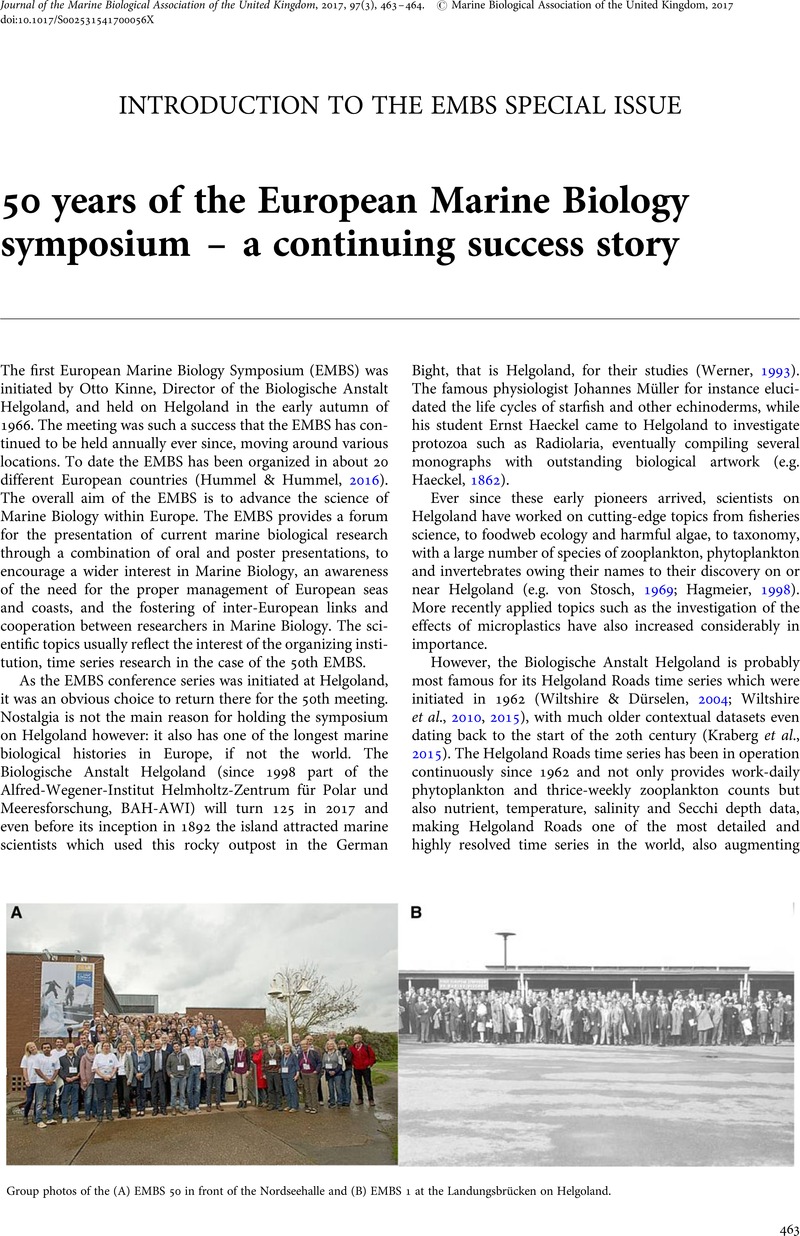No CrossRef data available.
Article contents
50 years of the European Marine Biology symposium – a continuing success story
Published online by Cambridge University Press: 16 May 2017
Abstract
An abstract is not available for this content so a preview has been provided. Please use the Get access link above for information on how to access this content.

- Type
- Introduction to the EMBS Special Issue
- Information
- Journal of the Marine Biological Association of the United Kingdom , Volume 97 , Special Issue 3: European Marine Biology Symposium , May 2017 , pp. 463 - 464
- Copyright
- Copyright © Marine Biological Association of the United Kingdom 2017
References
Hagmeier, E. (1998) Aus der Geschichte der Biologischen Anstalt Helgoland (ab 1945). Helgoländer Meeresuntersuchungen
52(Suppl.), 1–106.Google Scholar
Hummel, H. and Hummel, C.A. (2016) Scenario for the organisation of conferences and symposia. 4th edition. NIOZ-report, 2016–1. Yerseke: Netherlands Institute for Sea Research, 36 pp.Google Scholar
Kraberg, A.C.
et al. (2015) Historical phytoplankton data from Helgoland Roads: can they be linked to modern time series data?
Journal of Sea Research
101, 51–58.Google Scholar
von Stosch, H.A. (1969) Dinoflagellaten aus der Nordsee. II. Helgolandinium subglobosum gen. et. spec. nov. Helgoländer Wissenschaftliche Meeresuntersuchungen
19, 569–577.Google Scholar
Werner, P. (1993) Die Gründung der Königlichen Biologischen Anstalt auf Helgoland und ihre Geschichte bis 1945 (Suppl.). Helgoländer Meeresuntersuchungen
1–182.Google Scholar
Wiltshire, K.H. and Dürselen, C.-D. (2004) Revision and quality analyses of the Helgoland Reede long-term phytoplankton data archive. Helgoland Marine Research
58, 252–268.Google Scholar
Wiltshire, K.H.
et al. (2010) Helgoland roads: 45 years of change in the North Sea. Estuaries and Coasts. doi: 10.1007/s12237-009-9228-y.Google Scholar
Wiltshire, K.H.
et al. (2015) Control of phytoplankton in a shelf sea: determination of the main drivers based on the Helgoland Roads Time Series. Journal of Sea Research
105, 42–52.Google Scholar


